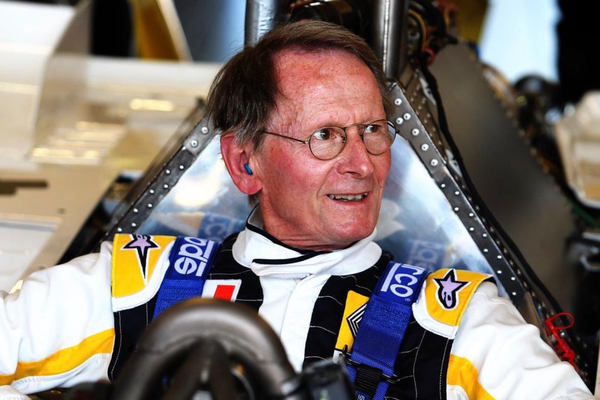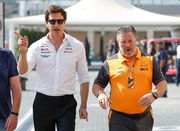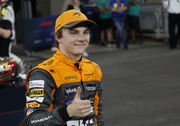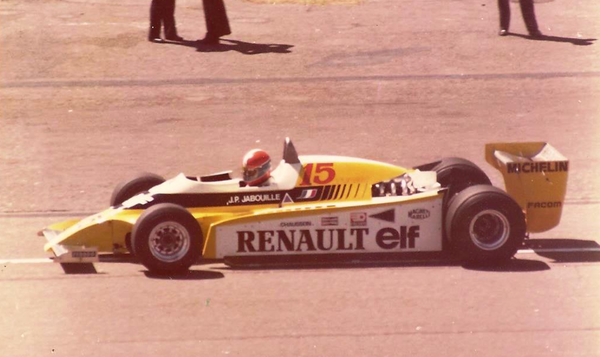

Jean-Pierre Jabouille was a two-time Formula 1 Grand Prix winner. But that statistic does not do justice to what he did for the pinnacle of motorsport. Jabouille was among the last of the breed of engineers who also raced in Formula 1. A path-breaking innovation that he incorporated in his car during his F1 stint continues to exist in modern F1 cars. The French racing enigma passed away on Thursday, aged 80.
Watch What’s Trending Now!
Jabouille’s record is one of the most unfortunate ones as he finished only 10 races from all of his 49 F1 starts. However, his name will forever be etched in the history of the sport because he is the first-ever Renault driver to win a race and the first-ever to do so with a turbocharged engine in 1979. Until then, turbocharged engines were alien to F1.
ADVERTISEMENT

Mourning his passing, Alpine (formerly Renault) released the statement, “BWT Alpine F1 Team is incredibly saddened to learn of the passing of Jean-Pierre Jabouille. A humble racing driver, brilliant engineer, and a pioneer of our sport. Jean-Pierre was a true racer. He spearheaded Renault’s journey into F1 in 1977 with his resilient and dare to do attitude.”
ADVERTISEMENT
“He was Renault’s first Grand Prix winner in 1979, a landmark moment in Renault’s journey in Formula 1. His determination and dedication to succeed inspired many, and these values remain central to the current team in its now blue colors of Alpine. We are where we are today because of Jean-Pierre and his legacy lives on. We’d like to extend our most sincere condolences to his family and close friends.”
Former French driver and 4-time world champion Alain Prost paid his respects to his fellow Frenchman as well.
ADVERTISEMENT
How Jean-Pierre Jabouille rose through the ranks to compete in F1
Jean-Pierre started his journey in F1’s feeder series in French Formula 3 in 1967. In 1968, he finished 2nd in the championship behind Francois Cevert. The impressive feat landed him a development driver’s seat at Alpine in 1969. Jabouille found himself juggling between F2 and supercar races until his big break in 1973.
He finished 3rd in the 24-hour Le Mans, driving for Matra in ’73. Jean-Pierre repeated the feat in the following year, winning the F2 race in Hockenheim. He also finished 2nd in the 2-liter European series’ standings driving for Alpine and that landed him two F1 appearances. Both occasions turned out to be forgettable ones, as he failed to qualify each time.
ADVERTISEMENT
In 1975, he ended the relationship with Alpine and the following year won the Formula 2 championship. The achievement won him the ticket to Formula 1 once again, with Renault.
Top Stories
Zak Brown & McLaren Possibly in Deep Trouble as Mercedes Cuts Engine Supply for F1 2026

Little Fan Makes “Super Important” Charles Leclerc Wish With a Promise to See Him at the Italian GP

Who Is Oscar Piastri’s Father, Chris Piastri? Co-Founder of Multibillion Dollar Automotive Company

Lewis Hamilton’s Dream May Materialize Soon as F1 Takes Decisive Steps for the Glaring Hole in the F1 Calendar

Oscar Piastri Reveals How Father, Chris’ Contribution to $35 BN Giant Birthed His F1 Career

Jabouille- the racer-engineer combo in Formula 1
In 1977, Jean-Pierre partnered up with Renault to develop their new 1.5-liter turbocharged engine. The product wasn’t an instant success and suffered from reliability issues. Moreover, it had a turbo lag that put them at a big disadvantage on tight circuits. That did not deter Jabouille and Co. as they continued working on the concept and results started to get better the next year.
ADVERTISEMENT

ADVERTISEMENT
The Frenchman qualified regularly in the 1978 season and the big success came at the United States Grand Prix East. Jabouille finished 4th in the race, scoring first points for the team. In 1979, Renault fielded a 2nd seat in F1 and roped in Rene Arnoux to race alongside Jean-Pierre.
It was this year when Jabouille grabbed his first pole position at the South African GP. At his home race, the French GP, he went a step further and created history by winning the race for the first time in F1’s history with a turbocharged engine. Despite the unprecedented success, the car suffered from reliability issues throughout the season. He managed to grab two more pole positions, nonetheless (in Germany and Italy).
Read More: Frederic Vasseur Warned of Ferrari’s Weakest Link Unlike Mercedes & Red Bull
ADVERTISEMENT
Jabouille’s final F1 career race win came at the 1980 Austrian GP before he had a horrific crash at the Canadian GP. The crash, caused by suspension failure, left him with a fractured leg.
The transition into management roles
Racing for Talbot, Jean-Pierre Jabouille bid goodbye to F1 for good after the Spanish GP in 1981. However, he continued to race supercars. In fact, before completely retiring from motorsports as a driver, he finished 3rd at the 1993 Le Mans. He raced for Peugeot that year and his experience, combined with his passion for engineering, landed him the director’s role on the team. Jabouille replaced the legendary Jean Todt there.
ADVERTISEMENT

Getty
MELBOURNE, AUSTRALIA – MARCH 14: Alain Prost, Special Advisor to Renault Sport F1 looks on in the Paddock during previews ahead of the F1 Grand Prix of Australia at Melbourne Grand Prix Circuit on March 14, 2019 in Melbourne, Australia. (Photo by Mark Thompson/Getty Images)
During his time at Peugeot, they supplied McLaren F1 with engines. The partnership turned out to be a successful one as the Woking-based team finished on the podium multiple times in 1994. Despite that, the Frenchman was replaced in 1995.
Watch This Story: F1 to Hold Crunch Netflix Talks Amidst Max Verstappen “Fake” Accusations
Paying his tributes through an Instagram post, Alain Prost dubbed his passing as a moment of great sadness for the French F1 community. Prost recalled how Jabouille was a mentor to him and how much influence he had on his driving. His legacy will truly live forever in Formula 1.
ADVERTISEMENT
ADVERTISEMENT
ADVERTISEMENT

